- Home
- Articles
- Architectural Portfolio
- Architectral Presentation
- Inspirational Stories
- Architecture News
- Visualization
- BIM Industry
- Facade Design
- Parametric Design
- Career
- Landscape Architecture
- Construction
- Artificial Intelligence
- Sketching
- Design Softwares
- Diagrams
- Writing
- Architectural Tips
- Sustainability
- Courses
- Concept
- Technology
- History & Heritage
- Future of Architecture
- Guides & How-To
- Art & Culture
- Projects
- Interior Design
- Competitions
- Jobs
- Store
- Tools
- More
- Home
- Articles
- Architectural Portfolio
- Architectral Presentation
- Inspirational Stories
- Architecture News
- Visualization
- BIM Industry
- Facade Design
- Parametric Design
- Career
- Landscape Architecture
- Construction
- Artificial Intelligence
- Sketching
- Design Softwares
- Diagrams
- Writing
- Architectural Tips
- Sustainability
- Courses
- Concept
- Technology
- History & Heritage
- Future of Architecture
- Guides & How-To
- Art & Culture
- Projects
- Interior Design
- Competitions
- Jobs
- Store
- Tools
- More
Exploring Wood and Glass Architecture: A Sustainable Approach to Modern Design
Discover the enchanting synergy of wood and glass in modern architecture, where elegance meets sustainability. This article explores innovative designs that seamlessly connect indoor and outdoor spaces, highlighting the materials' versatility and aesthetic appeal. Dive into the historical context, notable projects, and future trends shaping eco-conscious living.
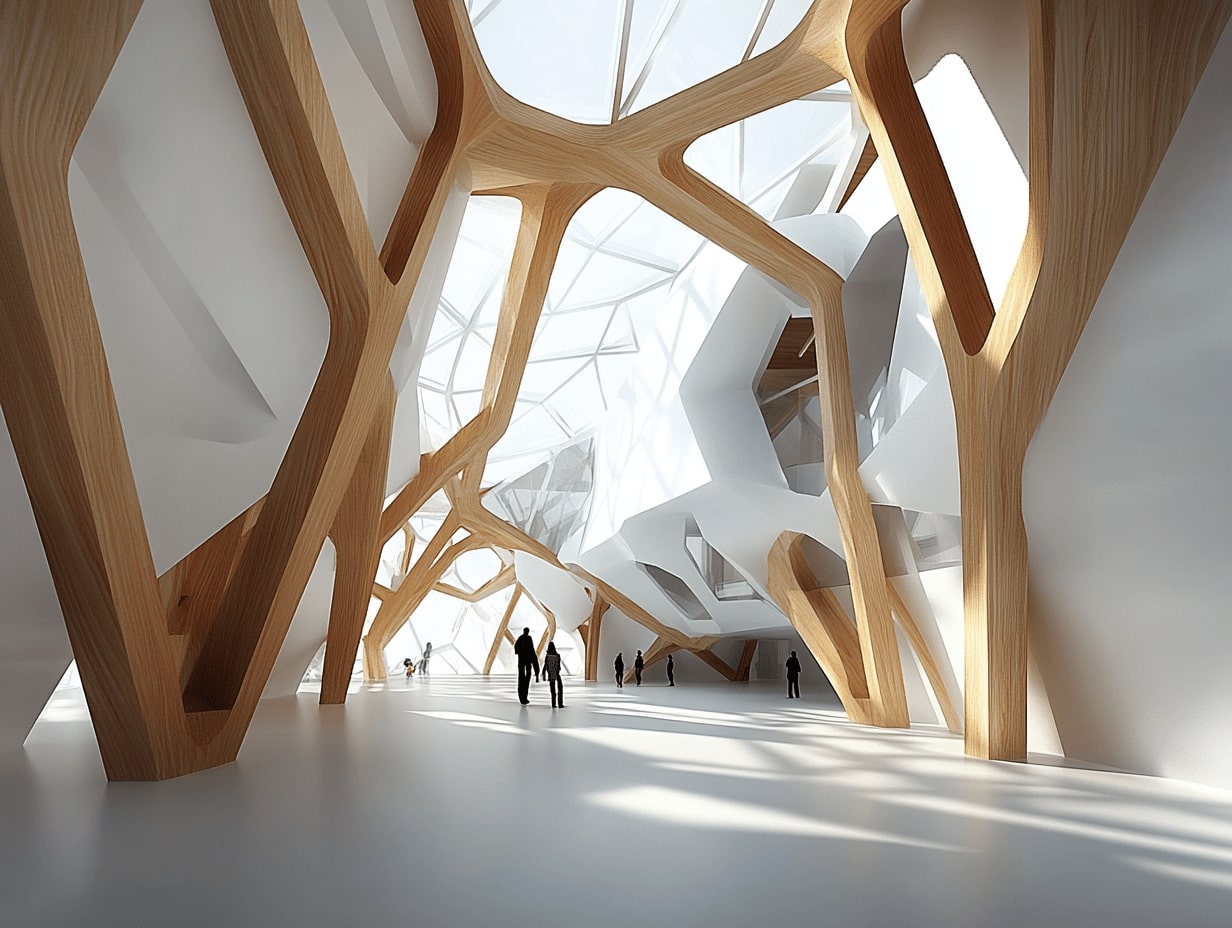
In the world of modern architecture, wood and glass create a harmonious blend that captivates our senses. These materials not only bring warmth and elegance to structures but also foster a connection between the indoors and outdoors. As we explore the innovative designs that showcase this beautiful combination, we’ll uncover how architects are pushing boundaries while respecting nature.
The versatility of wood paired with the transparency of glass opens up endless possibilities for creativity. From cozy homes to striking commercial buildings, this architectural duo transforms spaces into inviting sanctuaries. Join us as we delve into the unique benefits and aesthetic appeal of wood and glass architecture, and discover how these elements are shaping the future of sustainable design.
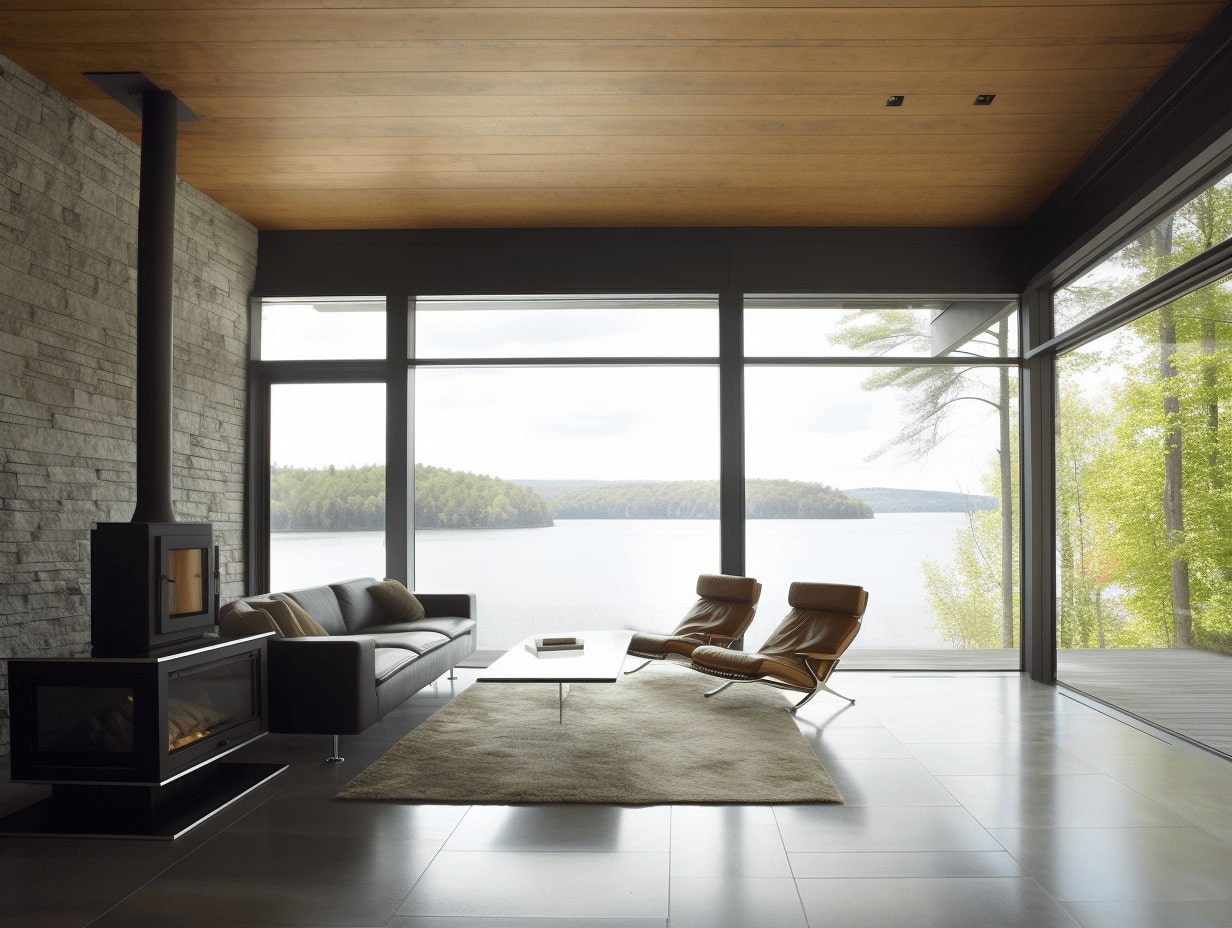
Table of Contents
ToggleOverview of Wood and Glass Architecture
Wood and glass architecture combines two distinct materials, creating striking designs that enhance spatial experiences. This fusion promotes sustainability and nurtures a harmonious relationship between interiors and their natural surroundings.

Definition and Characteristics
Wood and glass architecture involves the use of timber and transparent materials to construct residential and commercial buildings. Key characteristics include:
- Natural Aesthetics: Wood offers warmth, texture, and unique grain patterns that provide character to spaces.
- Transparency: Glass allows natural light to flood interiors, fostering a bright and open atmosphere.
- Sustainability: Wood as a renewable resource reduces the carbon footprint, while glass can incorporate energy-efficient technologies.
- Versatility: Designers can manipulate both materials for various styles, from rustic to modern, catering to diverse preferences.
- Structural Integrity: Advanced engineering techniques enable the safe integration of large glass panels and wooden beams, enhancing visual appeal.
Historical Context
The use of wood and glass in architecture traces back centuries. Historical developments include:
- Traditional Japanese Architecture: Wooden structures with sliding glass doors, known as shoji, established early examples of blending wood and glass while emphasizing harmony with nature.
- Industrial Revolution: The advent of glass-making techniques liberated architectural designs, allowing for expansive glass walls in 19th-century structures.
- Modern Movement: Architects like Frank Lloyd Wright employed wood and glass in innovative ways, shaping iconic buildings such as the Fallingwater house, which integrates nature seamlessly.
- Contemporary Trends: Current architects are revisiting these principles, integrating cutting-edge technology with traditional materials to create sustainable, visually stunning designs.
By understanding these elements, we appreciate how wood and glass architecture not only reflects aesthetic values but also addresses environmental concerns and connects us to our surroundings.
Benefits of Wood and Glass Architecture
Wood and glass architecture offers unique benefits that enhance both aesthetics and environmental sustainability. This combination creates harmonious spaces that invite nature indoors.

Aesthetics and Design Flexibility
Aesthetics play a crucial role in wood and glass architecture. Natural wood, with its warm tones and textures, contrasts beautifully with the sleek transparency of glass. This fusion allows for diverse designs, enabling custom solutions that fit various styles, from modern to rustic. Architects can use wood for structural elements, accents, or finishes while employing glass for expansive windows, walls, or roofs. The design flexibility promotes creativity in spatial organization and enhances the flow between indoor and outdoor environments. This versatility elevates the visual appeal, drawing occupants into the beauty of the surroundings.
Environmental Sustainability
Environmental sustainability is a primary advantage of wood and glass. Wood, a renewable resource, offers a lower carbon footprint compared to traditional building materials like steel and concrete. By incorporating wood, architects support sustainable forestry practices while reducing greenhouse gas emissions. Glass, when designed for energy efficiency, allows for passive heating and cooling, decreasing reliance on artificial climate control. Many contemporary buildings feature energy-efficient glazing to minimize heat loss or gain, contributing to overall sustainability goals. The synergy between wood and glass helps create spaces that are not only attractive but also environmentally responsible, fostering a connection to nature while promoting eco-conscious living.
Challenges in Wood and Glass Architecture
Wood and glass architecture presents unique challenges that architects and builders must navigate. Understanding these challenges enables us to create functional and aesthetically pleasing structures.
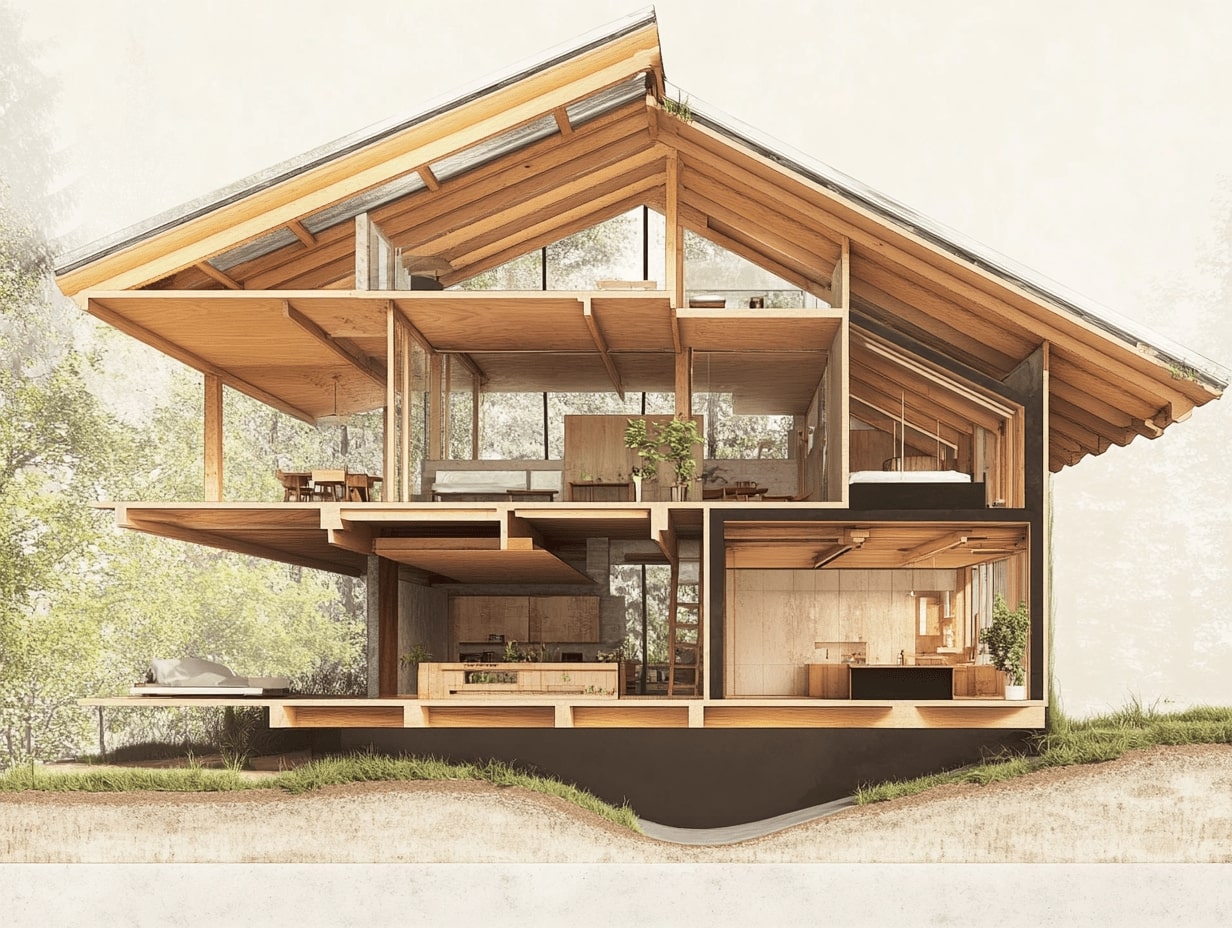
Structural Considerations
Wood and glass require careful consideration regarding load-bearing capacities and structural integrity. Wood, while strong, can be susceptible to warping, twisting, and decay if not properly treated or maintained. Glass, being inherently brittle, poses risks during installation and requires precise engineering to ensure safety. Integrating these materials necessitates robust structural designs, including the use of steel frames or supports to enhance stability while preserving the visual appeal. Engineers must carefully calculate weight distribution and stress points, ensuring the structure withstands environmental factors like wind and seismic activity.
Maintenance and Durability
Maintaining wood and glass structures demands ongoing attention to various elements. Wood needs regular sealing or treatment to protect against moisture, insects, and UV damage, which can lead to degradation over time. Understanding the specific wood species and their vulnerabilities allows us to select the most durable options for our projects. Glass surfaces can accumulate dirt and grime, requiring regular cleaning to maintain transparency and visual clarity. Concerns about thermal conductivity and insulation performance are critical; selecting high-quality, energy-efficient glass can mitigate temperature fluctuations. Addressing these maintenance aspects ensures long-term durability and functionality in wood and glass architecture.
Notable Examples of Wood and Glass Architecture
Wood and glass architecture showcases stunning designs across various projects. Below, we explore specific examples that highlight the beauty and functionality of this architectural combination.

Residential Projects
- The Glass House, New Canaan, Connecticut
Designed by Philip Johnson, this residence embodies transparency through its floor-to-ceiling glass walls and prominent wooden elements. The design integrates natural surroundings, blurring boundaries between indoor and outdoor spaces.
- S House, Japan
This contemporary home features wooden structural components combined with large glass surfaces. The dual-material approach enhances natural light and maintains a cozy atmosphere, embracing the traditional Japanese aesthetic while providing modern comfort.
- Wood and Glass House, Australia
This private residence showcases an innovative use of laminated timber and expansive glass panels. The design optimizes energy efficiency by harnessing sunlight and promoting airflow, creating a harmonious living environment surrounded by nature.
Commercial and Public Buildings
- KODE Art Museum, Norway
The KODE Art Museum uses a blend of timber cladding and glass facades to create an inviting atmosphere. The combination of materials enhances the museum’s connection to its scenic surroundings, while promoting sustainability.
- Treet, Norway
This striking residential building stands out as the world’s tallest wooden structure. Treet seamlessly integrates large glass windows with sustainable wood, delivering breathtaking views and demonstrating the viability of wood in urban settings.
- The Hive, London
The Hive serves as both a workspace and a wildlife attraction. Featuring a wooden exoskeleton and glass panels, the design embodies ecological principles while fostering an engaging environment that celebrates biodiversity.
Future Trends in Wood and Glass Architecture
Innovations in wood and glass architecture continue to push the boundaries of design and sustainability. As technology advances, we see the emergence of new materials and methods that enhance the functionality and aesthetic appeal of structures.
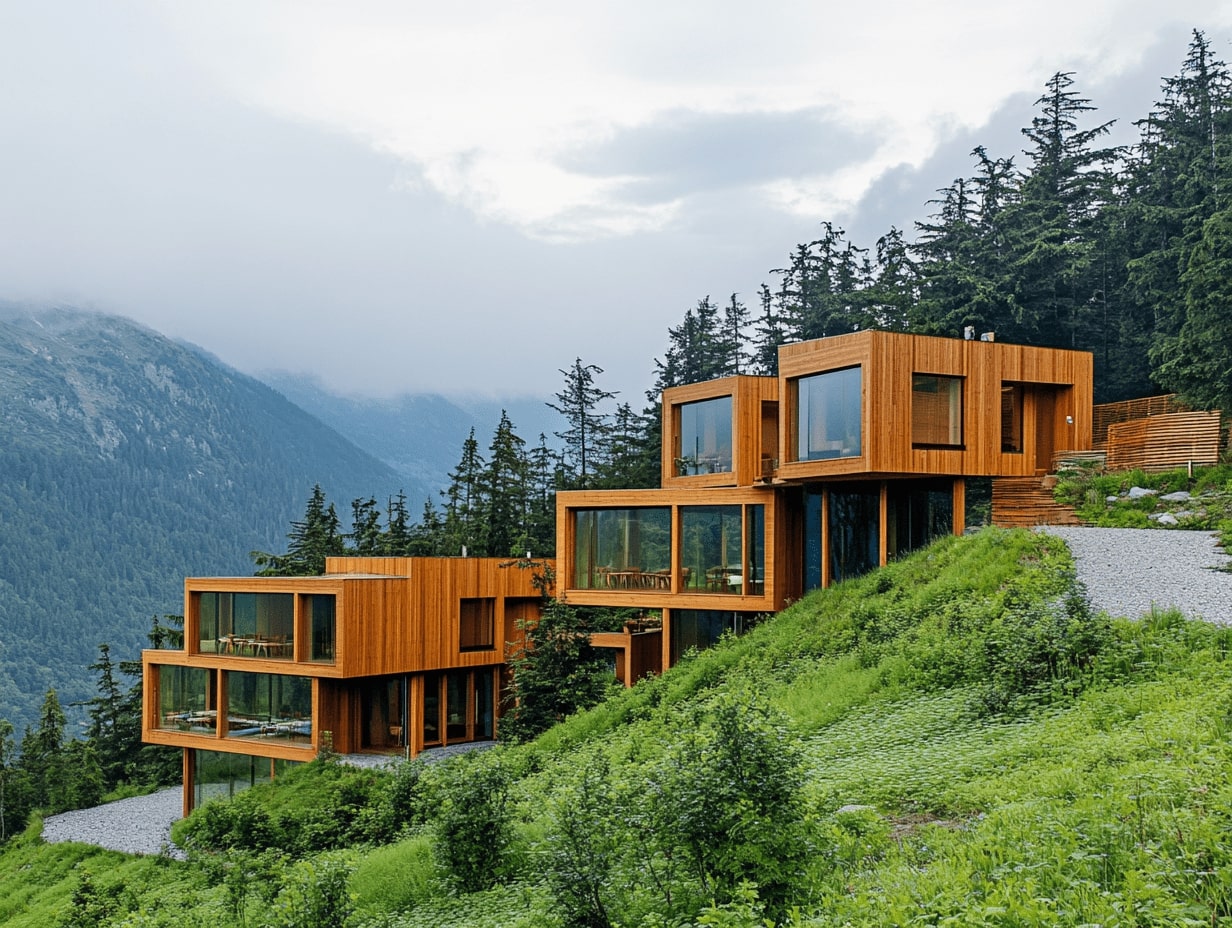
Innovations in Materials
New materials, such as engineered wood products and advanced glass technologies, enhance the use of wood and glass in architecture. Cross-laminated timber (CLT) offers superior strength and stability, allowing for taller wooden structures. Transparent solar panels and energy-efficient glazing also improve the sustainability of glass installations, enabling buildings to generate energy while maintaining natural light. Additionally, smart glass technologies can regulate temperature and light levels automatically, creating comfortable indoor environments. These innovations lead to more dynamic and responsive architectural forms that elevate both design and usability.
Sustainable Practices
Sustainability remains a core principle in contemporary wood and glass architecture. We observe architects embracing responsible sourcing practices by selecting certified wood from sustainable forestry. Furthermore, the use of local materials reduces transportation emissions and supports regional economies. Incorporating green roofs, rainwater harvesting systems, and natural ventilation strategies into designs further enhances ecological performance. Through lifecycle assessments, we can better understand the environmental impact of each project, guiding architects in making informed decisions that promote a lower carbon footprint. These practices reinforce our commitment to creating structures that engage harmoniously with the natural environment.
Conclusion
The fusion of wood and glass architecture yields remarkable benefits for modern design. Combining the warmth of wood with the transparency of glass elevates spatial experiences, fostering a strong connection between indoor and outdoor environments. By using renewable resources, this architectural approach supports sustainable practices, making it vital for eco-conscious living.
The historical context shows how influential designs have shaped our understanding of this combination. From traditional structures to contemporary innovations, architects continue to revisit these concepts to create visually striking designs. We recognize the significance of aesthetics, durability, and maintenance in ensuring long-lasting structures that truly resonate with their surroundings.
Challenges like structural integrity and material maintenance necessitate expert solutions. By considering these factors, architects maintain functionality while enhancing the visual appeal of wood and glass constructions. This careful balancing act invites us to appreciate the craftsmanship involved in creating harmonious spaces.
Looking forward, the future of wood and glass architecture appears bright, driven by advancements in materials and sustainable practices. Innovations like engineered wood products and solar technologies empower architects to design responsibly and creatively. As we embrace these developments, the synergy between wood and glass continues to foster an architectural landscape that resonates with nature and meets the demands of sustainable living.
- architecture with wood and glass
- contemporary wood structures
- eco-friendly building materials
- environmentally conscious architecture
- glass architecture design
- green architectural solutions
- modern eco-design
- modern sustainable architecture
- renewable building resources
- sustainable building design
- sustainable modern design
- wood and glass architecture
- wood and glass construction
I create and manage digital content for architecture-focused platforms, specializing in blog writing, short-form video editing, visual content production, and social media coordination. With a strong background in project and team management, I bring structure and creativity to every stage of content production. My skills in marketing, visual design, and strategic planning enable me to deliver impactful, brand-aligned results.
Submit your architectural projects
Follow these steps for submission your project. Submission FormLatest Posts
Furniture Movers by the Hour: Complete Guide to Hourly Moving Services in 2025
Introduction Furniture movers by the hour are professional moving services that charge...
Where To Charge Rivian: Complete Guide to Charging Locations and Networks
Introduction Rivian electric vehicle owners can charge their vehicles through multiple charging...
Frank Gehry Architecture: Style, Innovation and Iconic Works
Frank Gehry is one of the most influential architects of our time,...
The Dialogue Between Islamic Architecture and Modern Design
Explore Islamic architecture and modern design: climate-smart strategies, case studies, and courtyards,...


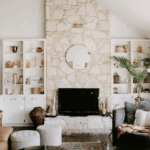

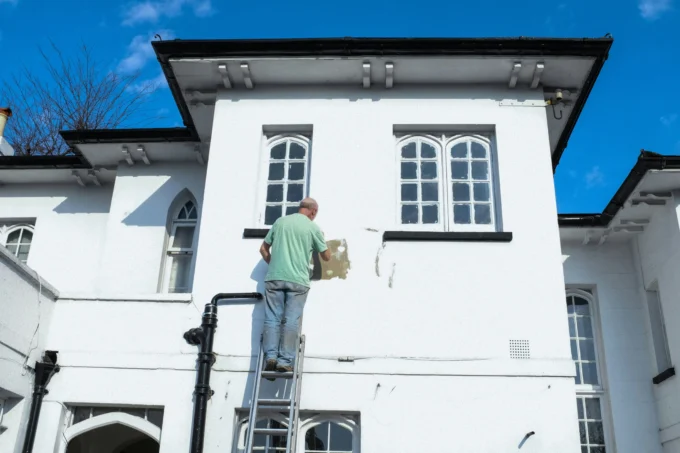







Leave a comment